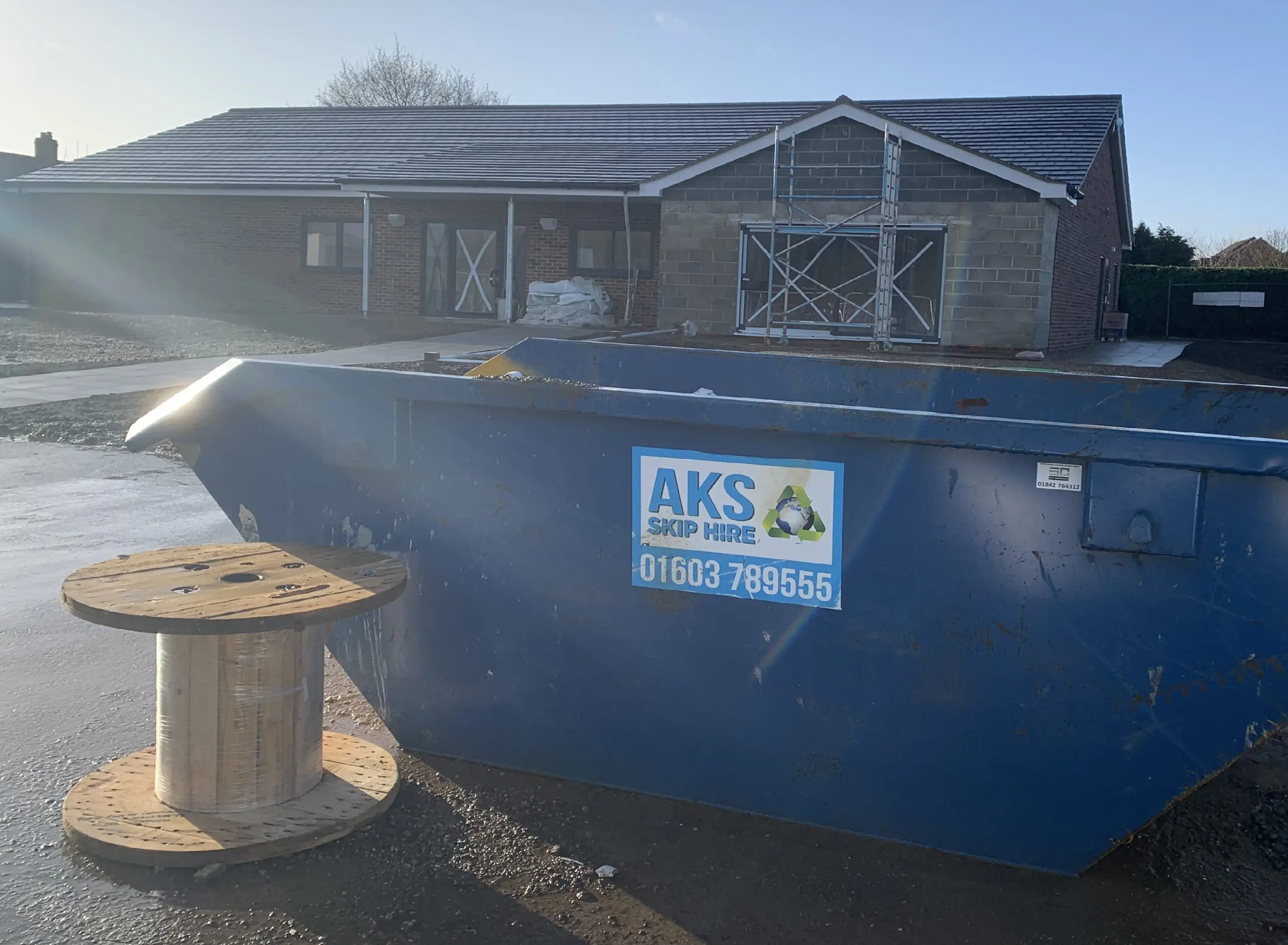There is nothing more unsightly or deflating than seeing a container full of waste outside your long-awaited commercial or domestic project.
An overloaded skip is not only dangerous to nearby pedestrians, cyclists and motorists, but also to the skip provider. In this blog post, we are going to explore the rules and risks of a skip overload, the importance of selecting the right skip size for your project, and some tips on how to avoid waste overload throughout the duration of your AKS Norwich skip hire period.
What are the rules when it comes to skip limits?
The chances are, most of us have passed an overloaded skip at some point in our lives, they are hard to ignore. Waste management services assert that rubbish should not exceed the skip’s red fill line. This line is an indication that your waste has reached the absolute maximum.
If you see your waste level creeping above this point, contact your waste removal company to request another skip to accommodate the surplus waste. This will accrue an additional skip hire cost, but it is the safest option.
Alternatively, you can remove some of the upper debris yourself to make sure that your rubbish is contained within the skip walls.
Skip overload: What are the risks?
If you fill your skip beyond the fill line, what risks may it pose to those nearby?
- Weight – Skips have a limit for a reason, if waste is overspilling, stop piling more onto it. Otherwise, you risk the skip becoming too heavy. When the skip is too weighty, it may make transportation for skip providers impossible, perhaps even damaging machinery or injuring operatives in the process.
- Extra costs – If the skip provider cannot transport a heavy skip safely, or your waste contains hazardous materials, they will likely refuse your waste removal, or organize for another skip to dispose of your excessive waste. Both of which will incur an additional service fee for the inconvenience, raising your skip cost.
- Safety concerns – An overflowing skip will present risk to the public if waste overhangs, dangles or protrudes. Any item of unsecured waste could block pavements or potentially fall during transportation and injure a pedestrian or driver.
What about material restrictions?
Check carefully with your skip provider about waste restrictions. Hazardous waste needs to be dealt with separately. And whilst some skip providers may charge an extra fee for dangerous materials, some may prohibit the disposal of hazardous waste entirely.
Hazardous waste includes but is not limited to: asbestos, electrical items, appliances, solvents, medical waste and fuels. If you are unsure, always ask your skip provider first before filling your skip.
How to avoid overloading your skip
With a bit of careful planning, it is easy to avoid overfilling your skip. Place the lightest items at the bottom of the skip — for instance, materials such as cardboard and polystyrene — and break down items where possible. The heaviest items should be deposited last, which will compact the existing waste underneath, and free up more space as your project progresses.
Affordable skip hire in Norwich and Norfolk
For both commercial and domestic use, the best way to avoid overloading your skip is to contact your skip provider directly and discuss which size skip will work best for your project needs.
At AKS, we have a range of skip sizes to suit all projects. Our smallest skip holds 4 cubic yards of waste, which is equivalent to the weight of a baby humpback whale. The largest 12-yard open skip can hold up to 8 tonnes of waste (the weight of two adult hippopotamuses), so it’s important to choose carefully!
Feel free to get in touch to discuss the best skip hire options for your needs.

